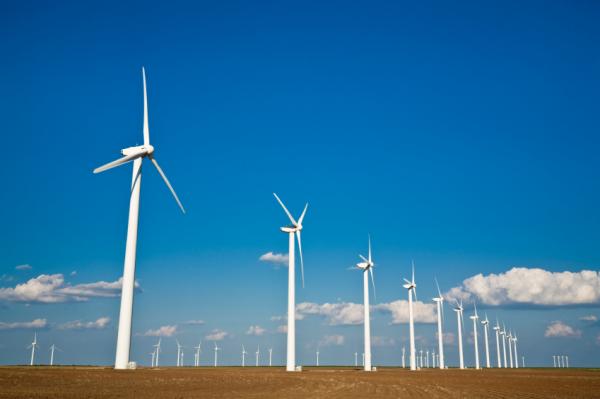For Wind Turbines, Bigger Equals Greener

Making wind turbines bigger might also make them more environmentally friendly, researchers say.
Wind power is an increasingly popular source of renewable energy. In the 27 European Union countries, gross production of wind energy grew more than 20 percent from 2006 to 2007, and the United States aims to produce 20 percent of its electricity by wind power by 2030.
The size of wind turbines is growing as well. The largest in the world is currently the prototype G10X from Gamesa Corp., which has a rotor diameter of 420 feet (128 meters), while another company, Vestas, has proposed a turbine with a 538-foot (164 m) rotor.
[Flying Turbine Lifts Wind Power]
Wind energy is often viewed as environmentally friendly. Still, even if wind turbines are situated so as to not inadvertently kill birds and bats, they may carry hidden environmental burdens, such as the fuel costs needed to transport them where they need to go.
To see whether building larger turbines makes wind energy more or less environmentally friendly, scientists analyzed the environmental burdens associated with each step of a wind turbine's life cycle, from extracting the materials needed for their construction to their production, transport, use and disposal. They focused on a variety of wind turbine sizes already on the market and operating, with rotor diameters ranging from about 40 feet to 300 feet (12.5 m to 90 m).
[U.S. Could Use 80 Percent Green Energy by 2050]
Sign up for the Live Science daily newsletter now
Get the world’s most fascinating discoveries delivered straight to your inbox.
The investigators found bigger wind turbines do make greener electricity. First, manufacturers now possess the knowledge, experience and technology to construct large wind turbines with great efficiency. Second, advanced materials and designs permit the efficient development of large turbine blades that harness more wind without corresponding increases in the amount of materials needed for construction or fuel needed for transportation.
"In other words, a doubling of the size does not double material consumption," said researcher Marloes Caduff, an environmental scientist at the Swiss Federal Institute of Technology in Zurich.
The researchers caution, however, that their "bigger is greener" findings are based only on wind turbines with rotors up to about 300 feet (90 m) in diameter. "The current results do not allow an extrapolation to future larger sizes," Caduff told InnovationNewsDaily. "This would also be an interesting effect we would like to research."
The scientists detailed their findings in the May issue of the journal Environmental Science & Technology.
This story was provided by InnovationNewsDaily, a sister site to LiveScience. Follow InnovationNewsDaily on Twitter @News_Innovation, or on Facebook.










